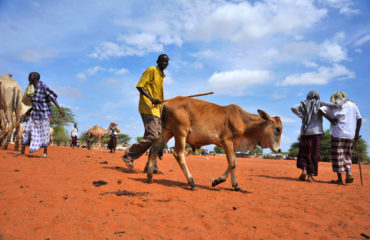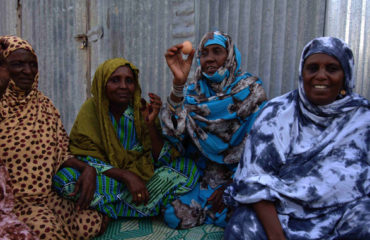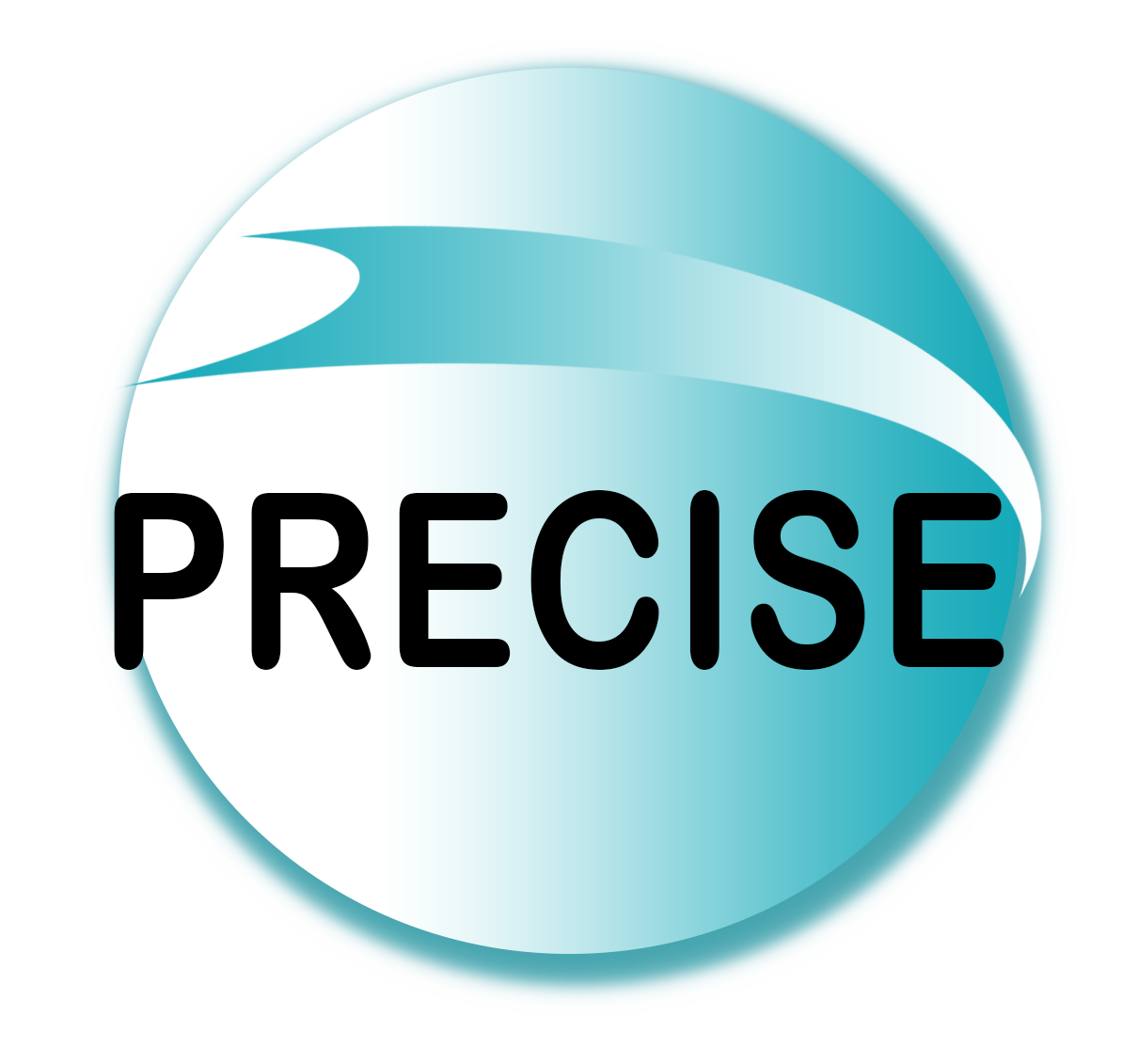PRECISE WORKING PAPERS
Kisuke NDIKU
April 2021
Preamble
Resource mobilizing is one of the key roles to keep at the helm of the management of organizations and businesses. Whether it is for business, CBO or NGO, this is a crucial make or break factor to beware of. This article shares highlights on some of the basics that lead to effective resource mobilizing. It seeks to show that understanding what resources are and what precedes how to mobilize them is key to the well-being of organizations and businesses. The article also points to the key aspects for effective resource mobilizing. There are techniques under each key aspect and the steps are not covered in this article as steps in a set of aspects need a separate article of its own to be well addressed and clear.
At the outset, it is evident that a good part of the resource is finance. But understanding resources from that perspective only is the narrow view. Resources include time, effort, competencies, opportunities, partnerships, collaborations, facilities, utilities, human resources, information (concrete, virtual, etc), and knowledge, access to external specialized skills (technical, professional, operational), and access to options that give opportunity. Why is it then that for the most part, CBOs and NGOs are looking for finances alone?
Whereas resources include finance, there are diverse ways of mobilizing the resources due to the fact they are of different types and quality. One of the most interesting aspects in resource mobilizing is found in the new approaches finance dealers are approaching lending. It would appear that there is an increased sector in borrowing and lending that is done without paperwork. An example is mobile lending. At the banks, most banks require a page or two of a proposal and they loan out huge amounts of money for three, five to seven years. Yet, CBOs NGOs among others have to write and write long proposals.
One current modality is for international NGOs to have funding from donors for 3-5 years. The international NGOs then tend to identify local NGOs and CBOs to partner with and give small short-term funds of between 3, 5, or 20, 30 thousand dollars for periods of 1 to 9 months. Some of the CBOs and local NGOs run about 3-5 such funds in a year and feel very proud about it. This they do without realizing they are overworking overspending in time, effort, competencies, facilities, utilities, opportunities, and specific partnership and partnering engagements. It is like preparing to obtain a loan without working capital and expect that a business will operate and repay the bank. This often does not work and the business is either eventually auctioned, or folds up with a debt overweight.
For a CBO or local NGO to operate efficiently and effectively with economies of scale, the resource mobilizing cycle should allow for a resource mobilizing period; a period for legal, logistical, and administrative aspects before funding, and a period to implement intended interventions, then a period for review, evaluation learning, and reporting, then new funding cycle. Often the resource mobilizing period can range from 3-15 months.
The most ideal period is to have about 18 months for implementation; then about 3 months of consolidating learning, evaluation, and reporting before a new cycle. This makes a systematic period of approximately 24 months in the shortest and this could be up to 36 months. Anything outside that challenges the capacities and capabilities of a CBO or local NGO to operate effectively and efficiently creating impact in its interventions, achieving its mandate to remain sustainable and resilient.
These realities are often challenged by the quest for survival, motivation to show off, and interest to remain as a going concern. These realities often compromise and come at the cost of quality work, efficiency, cost-effectiveness, and value for money. Where a CBO or a local NGO operates many small funds, it often falters and fails to meet the required standards of why they were funded due to the stated compromised factors.
Key Steps to Effective Resource Mobilizing
Often CBOs or local NGOs do not pay much attention to some of the steps. These comprise Context Analysis, Situational Analysis, Baseline Assessment and Analysis; Needs and Priority Analysis, Intervention and Outcome Analysis, Management Strategy Analysis, and Resource Analysis. These are very crucial steps in resource mobilizing.
Each of the steps will be explained briefly to highlight what it is and what is the expected outcome. This will facilitate in guiding the overall resource mobilizing process in an operating CBO or local NGO.
Context Analysis
Context analysis is broad and looks more outward in the operating context. It has specific tools and steps of how it is conducted. It has to do with scanning the operating environment systematically using a set of available commonly used tools of analysis to create a documented synopsis of key factors that exist in the operating context. It involves a systematic informed evidence-based review process. The context analysis process collects evidence to facilitate scoping to analyze the range of interlocking and interloping issues that influence and affect development issues and strategies of actors, stakeholders, and duty bearers in the immediate geographic localities where a CBO or local NGO operates.
It includes mapping, both as in the creation of sketch maps to depict issues that need sketch maps. Mapping can also include identifying, recognizing, and locating the existence of evidence on factors, trends, patterns that have immediate influence and affect the content of the operating context. For instance, aspects that might influence or affect decision-making or issues that might aggravate or alleviate priority development issues and strategies in the target locality. This also includes mapping occurrences of issues that might emerge and cause change to the content and context of operation.
Context analysis also explores to examine and document evidence on key trends and patterns of change and influence that have the most likely to affect, pre-empt emerging issues relevant to the work of the CBO or local NGO. The context analysis will invariably gather informed evidence-bound assessment and analysis of risks and disruption that is most likely to occur in the operating context and document them, providing the basis for planning how to mitigate risk and disruption. The content and attributes of each identified key factor are then systematically summarized to show how such factors would affect and influence the operating context in the foreseeable future.
Situational Analysis
Situational analysis is considered to be internal as it originates from assessing the health of the CBO, local NGO, or company, to establish and document its capabilities, and status in performing at the optimum with efficient and effective internal systems and capacities. It then leads from the internal to explore immediate aspects for targeting such as competitiveness in delivering the mandate for which the CBO, local NGO, or company was set up. It then identifies its internal strengths, available opportunities, how to maximize these.
The situational analysis then looks at inherent weaknesses or gaps, and threats or risks/disruptions, and how to minimize them. At the same time it explores other similar operating entities in its field and space, and how liaison with them or partnering, networking, and collaborating might contribute to enhance performance, therefore increase the chances and options for thriving and performing even better.
It examines the priority aspects that have the potential to lead to higher chances of success and improved quality and level of performance with the least possible effort and inputs. This facilitates analysis of priorities, interventions, aspects of specialization, and growth; as well as aspects of the work that needs more effort and time to improve. Situation analysis is important as it collects evidence on what the CBO or local NGO should target in terms of scope of its interventions, options and opportunism, spatial focus, and target number of people, or organizations it hopes to engage with and or serve. In this way, the CBO or local NGO creates evidence on aspects of priority setting, strategy, and targeting.
Situational analysis facilitates exploring existing or available resources of all types that are needed for effective and efficient operations when they are needed to define the different resource pipelines and a plan for resource mobilizing. Resource pipelines have to do with the spread of needed resources over time. It is an approach to planning resource mobilizing and it is used to indicate at what point various types, quality, and volumes of resources will be required insufficient levels for users to operate effectively.
Baseline Assessment and Analysis
Baseline assessment has to do with collecting evidence on selected priorities for which a CBO or local NGO intends to create interventions. The evidence collected by the baseline assessment has to do with quantitative and qualitative data and information The evidence is related to what the conditions are at the beginning of the intervention, to facilitate the monitoring and tracking changes in the conditions being addressed to meet the need.
Based on baseline assessment and analysis, the evidence is analyzed to establish outcomes that mitigate to address the issues being addressed. Baseline data also informs the creation of parameters for designing tracking of monitoring indicators which are used when managing the implementation of interventions. The indicators also guide on reporting and are a strong basis for the evaluation of outcomes of the interventions.
Baseline assessment and analysis also provide the basis for determining the most primary priority aspects to intervene on and what might be secondary. The analysis of baseline also provides the basis from where to design the management framework to guide the implementation of interventions systematically. Baseline assessment and analysis use a range of tools that define the steps of the process.
Needs and Priority Analysis
For a CBO or local NGO, needs arise from two levels. Internal needs of capacity, capability, and competencies, for managing systems processes and procedures that lead organizational, and personnel performance. This is more structural and organization-based. It is important to analyze these out of the situation analysis to determine whether the CBO or local NGO has what it takes to execute its mandate in the required manner for effectiveness.
The second aspect of needs and priority analysis is based on the outcomes of the baseline assessment and analysis. This set of needs defines the elements of intervention for which planning organizing and coordination will be needed to execute a program or project. This second set of needs defines what types of business, or projects to design, mobilize resources for and plan on how to execute them. A CBO or local NGO needs to be focused as it cannot do everything. That is why needs and priority analysis is essential. By undertaking such an analysis the CBO or local NGO selects what it should focus on for a certain period and with a certain amount and volume of resources.
Intervention and Outcome Analysis
The intervention and outcome analysis is a process for linking priority needs to interventions and to the change that will be realized when the CBO or local NGO executes a project or a program. It is a process undertaken as part of the design of a program or project. It is an important process to conduct the intervention and outcome analysis so that the CBO or local NGO can identify and select the best strategies and interventions on how to execute its plans effectively. it is this process that leads to the creation of goals and objectives to guide implementation.
The process benefits from the aspects generated by the situation analysis to those of the baseline assessment and analysis, as well as those of the needs and priority analysis. This way the organization uses informed evidence all along. Intervention and outcomes analysis gives clarity to the process of self-audit in the CBO or local NGO. It facilitates confirming that what has been planned is evidence-based and the CBO or local NGO has the necessary capabilities, competencies, and resources for use in executing a plan, project, or program.
Management Strategy Analysis
This is a management review aspect, which seeks to confirm that the CBO or local NGO has the management competencies and capabilities. It examines the key functions of direction setting, leadership, decision making, and function management levels, required for managing internal operations; as well as execution requirements over a given period and space. Often this is undertaken during the organizational capacity assessment.
During this review, aspects of capacities for compliance, and adherence to management processes, procedures, and practices are examined. In addition, it is at this level that the capabilities on how the CBO or local NGO will respond to risks and disruptions are assessed. Plans are then taken by the CBO or local NGO to address any gaps identified before they become hindering issues to operations.
Resource Analysis
Resource analysis is a process with defined procedures for collecting data and evidence and is always about the future. Though future-oriented, resource mobilizing is linked to the current setup and functions, roles, and obligations of the organization given its mandate, nature of work, and operating context. Important aspects that must be achieved by resource analysis include but are not exclusive to, creating evidence-based data and information to indicate types of resources it needs, quality and volume of needed resources, when the resources are needed, and at what periods in time.
Resource Analysis should be undertaken as an important process to cause the organization to realistically, and systematically analyze its resource needs objectively, without competition with others. Based on the outcome of the resource analysis process, then the organization can make concrete plans on how it will create or generate the resources needed to fulfill its mandate, goals, and objectives.
Resource analysis undertakes internal resource review based on all key operational functions, core business, and programs the organization is mandated to deal with. Based on this, the evidence is used to forecast the estimated trend of organizational needs for resources by type, quality, volume, and timing. This leads to resource mapping which is a process to identify potential, feasible, and viable sources. At this level, resource analysis has two aspects, thus, donor mapping, or funding base analysis; and relevant feasibility and viability studies. The resource analysis process consolidates documented evidence for use in resource mobilizing strategy development.
As observed earlier in this article, overall, it is more expensive to operate many small funds with short periods for any organization. Whereas it is not always possible to secure big sums of funding for long periods, analyzing the resource needs systematically with a medium and long-term future in mind, can strategically facilitate a CBO or local NGO to create a premise for managed resource growth, and effectively managed resource mobilizing strategy for operations.
Resource analysis is a systematic evidence-based process. The evidence is obtained from concrete and credible data, information for analyzing demand and supply of different types, quality, and volume of resources that an organization will need in its operations in a given period in time. It is undertaken to forecast the resource needs based on two, five, and seven-year periods in time. This corresponds to the short term, medium, and long term.
Resource analysis is reviewed often enough and within every two years to examine changes and shifts in sources of resources as well as a review in changes in the scope of organizational needs and priorities for resources. The evidence, data, and information are documented for use in reference and application of knowledge to create resource mobilizing strategies for an organization.
Experts in resource mobilizing talk of taking a 3600 look at resource base to acquire a full view of the types, quality, volume, and time resources are needed for efficient operations and execution of business, plans, and programs of an organization. Such a view is essential as it places the management and teams in a CBO or local NGO to become better acquainted with the need to operate more efficiently applying cost-saving, resource optimizing, and participate in resource creation with knowledge.
Resource analysis is internal to the organization and explores within and outside the organization to objectively create a strategic plan by which resources can be generated on time, with adequate volumes and quality for operations. The resource strategic plan facilitates the design and development of resource pipelines and interventions that facilitate achieving the benchmarks on each resource pipeline.
This creates baselines for use on how the organization will go about mobilizing resources. Each of the steps in resource mapping, donor mapping, feasibility, and viability studies, including partner mapping has specific steps and tools for use. The steps, tools, and processes lead to effective resource analysis that contributes to efficient resource mobilizing. Resource analysis culminates in the development of a fully-fledged resource mobilizing strategy to guide resource mobilizing
Resource mobilizing
This process is backed by all the analyses, discussed in this article. An organization embarks on resource mobilizing once the full cycle in the resource analysis process is completed. Resource mobilizing is the executing process of a defined resource development strategy. Resource mobilizing is a systematic process in that, it takes different strategy interventions and makes implementation plans towards how the resource will be generated to meet set targets, standards benchmarks, and indicators on the designed resource pipelines.
Aspects of resource mobilizing include donor and partner liaison and management; another aspect is concept note and proposal development; at times resource mobilizing has to do with the response to a call by donors. Other aspects have to do with creating consortia for lobbying for a particular cause. Networking, partnership creation, collaboration, and critical collaboration i.e. implementing on behalf of governments are also used in resource mobilizing. An important attribute of ineffective resource mobilizing is effective communication in both in-person, virtual, written, verbal, and public relations. All these avenues create options for mobilizing resources in terms of human resources, funding and facilities utility supplies of one kind or other, etc.
As of 2015 sources of funding are diversifying rapidly outside traditional models. There is a strong entry into the development space by private sector players and social entrepreneurs. Social impact investing has begun to take hold and this has shifted the traditional funding models by a big measure1. With enhanced globalization private investments, the highly selective foreign direct investment, and Diaspora remittances have surpassed all categories of development aid in Africa since 20152. This space is also being affected by new models of funding and financing development such as outcomes-based financing3.
In Africa, options such as performance-based financing have demonstrated sources of funding to CBOs and NGOs, with Examples in Rwanda, Ethiopia, Zimbabwe, and to some limited degree Kenya. There are new sources of funding to the civil society such as the Africa Development Bank and its affiliates, large corporations through corporate social responsibility, and foundations owned by them. Devolved government budget lines have also become more available to support what CBOs and local NGOs do. Local communities are also contributing to the resources of CBOs. to access some of the funds’ collaboration in consortia and other forms of partnership is a prerequisite. Funding is available to bankable organizations which have put in place documented mechanisms to manage risk and disruption, through systematic risk/disruption assessment and analysis as well as by documented organizational capacity assessments.
Resources can also be mobilized and generated from internal efforts the organization puts in place such as internal reserves and savings that have targets, viable investments that an organization can make, and which have a timeline on returns. Whereas in the past opportunities for self-generated funding efforts were not common, this has become a new option to many local organizations. The effort for undertaking such efforts for internal resource mobilizing requires a different form of management and should be addressed with technical and professional competence and integrity so that it will not conflict with other goals in a CBO or local NGO. This sharpens the need for very competent Trustees in the organization.
Conclusion
This article has pointed out that effective resource mobilizing requires a certain pattern informed types of evidence-based analyses. The series of analyses described here facilitates internal clarity as well as clarity on the external environment and in the environment where resources will be mobilized. The article sought to set out the key aspects and not the steps and process in each of the aspects, but it points out envisaged uses of the outcomes from each of the analyses. The article also points out that the different analyses are interlinked and intertwined to make the whole. It serves as an overview that guides the resource mobilizing practitioner.
1Sir Roland Cohen: (Mar 2021) How Impact Investment and Entrepreneurship Are Reshaping Capitalism – https://som.yale.edu/news/2021/03/sir-ronald-cohen-on-how-impact-investment-and-entrepreneurship-are-reshaping-capitalism
2EU Institute for Security Studies (2017). Africa Futures-Horizon 2025, Issue # 37 -PDF ISBN 978-92-9198-631-6 ISSN 2363-264X doi:10.2815/561974 QN-AF-17-007-EN-N
3Nonprofit Finance Fund, (2017). Invest for Results – https://nff.org/invest-in-results





